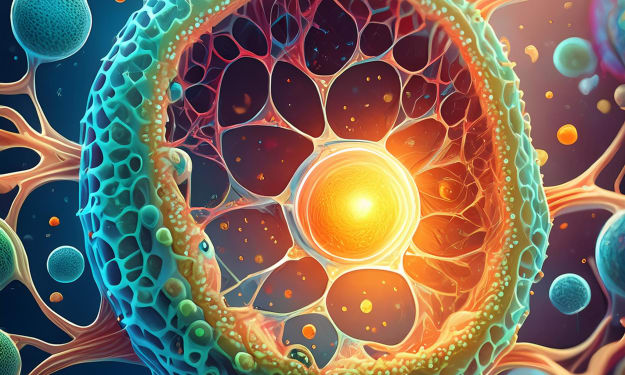Unveiling the Mystery: Why Did COVID-19 Become a Pandemic?
Exploring the Unique Characteristics of SARS-CoV-2 and the Body's Defenses

Unveiling the Mystery: Why Did COVID-19 Become a Pandemic?
The emergence of SARS-CoV-2, the virus responsible for COVID-19, in late 2019 marked a turning point in human health. Unlike the common cold, which often involves coronaviruses of different strains, COVID-19 rapidly escalated into a global pandemic, infecting millions and claiming countless lives. Understanding the reasons behind this severity is crucial for ongoing research and future preparedness.
A Novel Threat and Zoonotic Origins:
A key factor in COVID-19's devastating impact lies in its novelty. This virus had never encountered humans before, leaving our immune systems unprepared for immediate defense. While the exact origin of SARS-CoV-2 is still under investigation, scientific evidence suggests it jumped from animals, likely bats, to humans.
The Human Immune System on Alert:
Our immune system comprises two main lines of defense: the innate immune system, offering a first response, and the adaptive immune system, which develops targeted defenses against specific pathogens. The adaptive immune system relies on specialized cells that create antibodies – proteins that recognize and eliminate viruses. However, encountering a new virus for the first time means the adaptive immune system needs time to develop these specific antibodies, leaving individuals vulnerable in the initial stages of infection. This explains why people who have had COVID-19 or received a vaccine often experience milder symptoms upon re-exposure – their immune systems are now equipped with the specific antibodies to combat the virus effectively.
The Role of RNA and Its Vulnerability:
SARS-CoV-2, like all coronaviruses, uses RNA (ribonucleic acid) to store its genetic information. This differs from our own genetic material stored in DNA (deoxyribonucleic acid). One consequence of this RNA reliance is the virus's higher mutation rate – RNA is more prone to errors during replication compared to DNA. This characteristic fuels the emergence of new variants, posing ongoing challenges in controlling the pandemic.
However, this RNA-based structure also presents a vulnerability for the virus. Our cells possess special RNA-binding proteins that can activate enzymes designed to break down viral RNA. Individuals with a specific variation of this RNA-sensing protein exhibit a lower risk of severe COVID-19. This highlights the vital role of the innate immune system, the first line of defense present in all our cells.
Unveiling the Secrets: The Power of Vaccines
The COVID-19 pandemic has spurred an unprecedented global research effort. Scientists have made significant strides in understanding SARS-CoV-2, including the importance of a robust antibody response in preventing severe illness. A crucial outcome of this research has been the development of highly effective vaccines.
Harnessing the Immune System: How Vaccines Work
Vaccines work by presenting a weakened or inactive form of a virus or specific viral components to the immune system. This “training” allows the body to develop a targeted immune response without experiencing actual infection. When a vaccinated individual encounters the real virus later, their immune system is primed to recognize and fight it off quickly, preventing serious illness.
There are several different vaccine platforms used for COVID-19 vaccines:
Messenger RNA (mRNA) vaccines: These vaccines deliver genetic instructions to our cells, prompting them to produce copies of a specific viral protein. The immune system then recognizes and develops a response against this protein, preparing to combat the actual virus. The Pfizer and Moderna vaccines are examples of mRNA vaccines.
Viral vector vaccines: These vaccines use a modified version of a harmless virus to deliver genetic material from the target virus (SARS-CoV-2) into our cells. Once inside, the cells produce viral proteins, triggering an immune response. The Johnson & Johnson vaccine uses viral vector technology.
Inactivated virus vaccines: These vaccines contain a weakened or inactivated form of the entire virus. While the virus cannot replicate and cause illness, it still prompts the immune system to develop a protective response. This is a more traditional vaccine approach, although no inactivated virus vaccines are currently authorized for COVID-19 in most countries.
Addressing Vaccine Concerns: Safety and Efficacy
Vaccines have undergone rigorous testing and have been demonstrably safe and effective in preventing severe COVID-19 illness, hospitalization, and death. However, some concerns and misinformation persist.
It's important to understand that all medications and vaccines carry some potential for side effects. However, the side effects associated with COVID-19 vaccines are typically mild and short-lived, such as pain at the injection site, fatigue, or headache. The benefits of vaccination far outweigh these minimal risks.
Another concern is vaccine efficacy against emerging variants. While new variants can sometimes reduce vaccine effectiveness slightly, they still offer significant protection against severe illness, hospitalization, and death. Booster shots are also being developed and deployed to further enhance protection against variants.
Public Health Measures: Working Together
While vaccines are a powerful tool, they are not the only weapon in our fight against COVID-19. Public health measures like mask-wearing, social distancing, and proper hygiene practices have also played a crucial role in curbing the spread of the virus. These measures help to reduce the number of viral particles individuals are exposed to, giving the immune system a fighting chance while vaccines take effect or for those who cannot be vaccinated. By employing a multi-pronged approach that combines vaccination with public health measures, we can continue to mitigate the impact of COVID-19 and work towards a future where the pandemic is under control.
In Conclusion
The rapid spread and severity of COVID-19 stemmed from a combination of factors, including the virus's novelty, its reliance on a more mutable RNA structure, and the initial lack of pre-existing immunity. However, scientific advancements have led to the development of highly effective vaccines and a greater understanding of the virus and the immune system's response. Public health measures also play a vital role in controlling the spread of the virus. Ongoing research on booster shots, new vaccine technologies, and treatment options offers hope for continued progress in managing COVID-19.
About the Creator
suren arju
Hi there! I'm Suren, your startup guide. Entrepreneur, writer, dreamer - I share insights, tips & stories to fuel your startup journey. Ready to explore, learn & win together? Join me & let's redefine how we launch, learn & leap!
Enjoyed the story? Support the Creator.
Subscribe for free to receive all their stories in your feed. You could also pledge your support or give them a one-off tip, letting them know you appreciate their work.





Comments
There are no comments for this story
Be the first to respond and start the conversation.